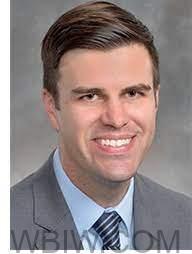
INDIANAPOLIS — The need for workforce talent remains the top concern in 2022 for Indiana employers – and by a wide margin.
In response, more and more Hoosier companies are springing into action with various initiatives to address the talent shortage. Those are two top takeaways from the 15th annual employer workforce survey from the Indiana Chamber of Commerce and its Institute for Workforce Excellence (IWE).
Of the 992 survey respondents, 83% said meeting talent needs is a challenge. More than half (52%) said it’s their biggest challenge.

“Finding enough talent and the right talent continues to be a huge problem plaguing Indiana employers,” says Jason Bearce, Indiana Chamber vice president of education and workforce development. “The concern over talent by far trumps other concerns, including government regulations, inflation, and supply chain challenges.”
In the survey, 18% identified government regulations as its biggest workforce challenge, while 16% said inflation, and 15% mentioned supply chain issues as the biggest challenge.
Alarmingly, 74% of Hoosier firms said they were forced to leave jobs open – at least temporarily – in the last year due to a lack of qualified applicants. “That’s the highest it’s been in the survey’s 15-year history,” Bearce states. “That’s up from 45% in 2020 and 60% in 2021. This is a trend heading in the wrong direction.”
Another question probed how employers ultimately responded to the talent shortage. More than half (51%) left the unfilled positions open, while nearly one in three (30%) companies hired underqualified candidates, and just less than a quarter of the firms in the survey either hired temp workers (23%) or remote workers (21%) to deal with the shortage.
Indiana companies aren’t sitting on their hands waiting for the overall situation to get better. “In the survey, we’re seeing companies getting aggressive about addressing the need for talent in ways we haven’t seen before,” Bearce notes.
This year, 55% of companies surveyed said they’ve increased their investment in training. That’s up from 31% last year. There was an almost equal jump in on-the-job training, which was up from 33% in 2021 to 55% of the companies surveyed this year. Forty-seven percent of firms reported increasing time allowed for training, up from 27% last year; 25% increased classroom training, up from 8% last year; and half the companies reported increased online training, up from 40% a year ago.
“These are the biggest one-year changes in time spent on and investment in employee training we’ve seen since the survey began,” Bearce emphasizes.
Survey results show that companies are also responding to the talent shortage by strengthening and diversifying their recruitment strategy.
“There are signs that employers are thinking more broadly about where and how they source or cultivate talent, including tapping historically disadvantaged workforce populations, including those that were formerly incarcerated, individuals with disabilities, and recipients of public assistance,” Bearce explains.
He notes that more employers are cultivating future talent through work-based learning and doing so earlier through high school internships and youth apprenticeships.
Additionally, Bearce adds, more employers recognize that accessible and affordable childcare is a workforce barrier that needs to be addressed as part of their talent strategy, along with housing and transportation.
Those steps seem to be having a positive impact. The number of respondents who reported that the supply of candidates does not meet their needs declined from 72% in 2021 to 62% this year. That’s still higher than the 50% who responded that way in 2019 and 2020.
Significant challenges remain. Chief among those, Bearce says, is the need to increase the amount of training that results in industry-recognized credentials “that give workers currency in the labor market and make Indiana more economically competitive for business expansions and company relocations.”
Bearce also pointed out that the survey showed companies’ human resources departments are often dedicated to compliance, payroll, and benefits issues rather than strategic talent attraction and development.
“It’s clear that more employers would benefit from engaging in meaningful talent pipeline partnerships with K-12 and higher education institutions, workforce training providers, and community-based organizations,” Bearce stresses.
To help combat the talent shortage, the Indiana Chamber’s nonprofit IWE launched a first-of-its-kind online workforce center called the Talent Resource Navigator this summer with live customer service. This web-based tool allows Hoosier employers and individuals to better identify and access in one place the vast number of educational and training programs and resources available across the state.
“The talent challenge raises an abundance of opportunities for employers,” Bearce offers. “This is a perfect time for companies to encourage their workers to skill up.
“The Indiana Chamber is working closely with state and regional partners to help more employers engage with area resources from education, community, and government,” he imparts. “This is key to deploying robust talent strategies that benefit employers and employees as well as the community at large.”
Full results are available at www.indianachamber.com/survey.



